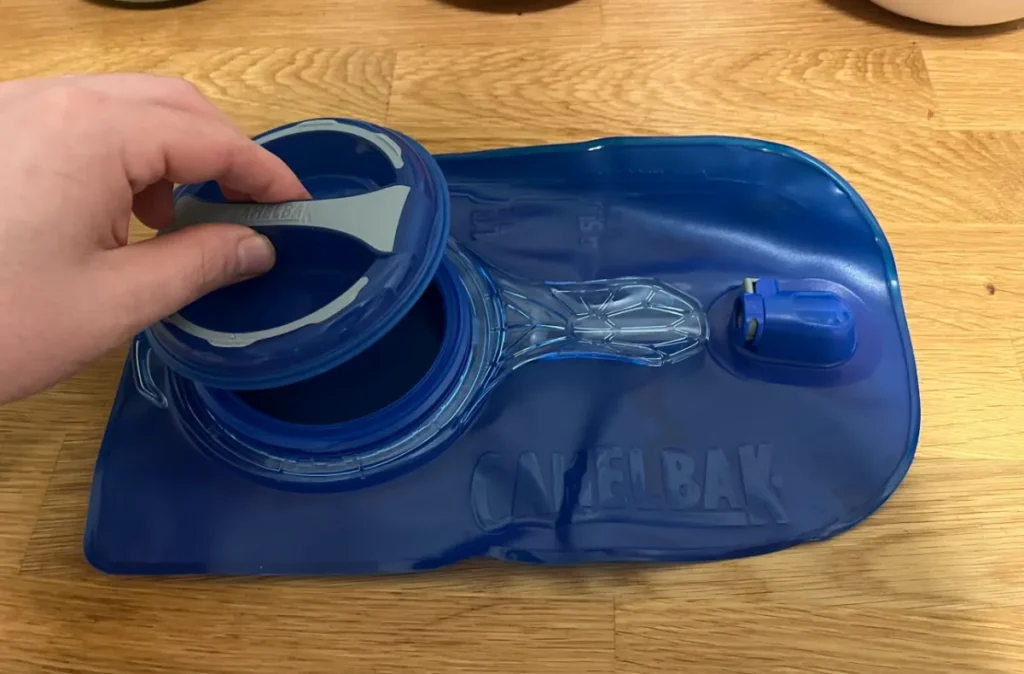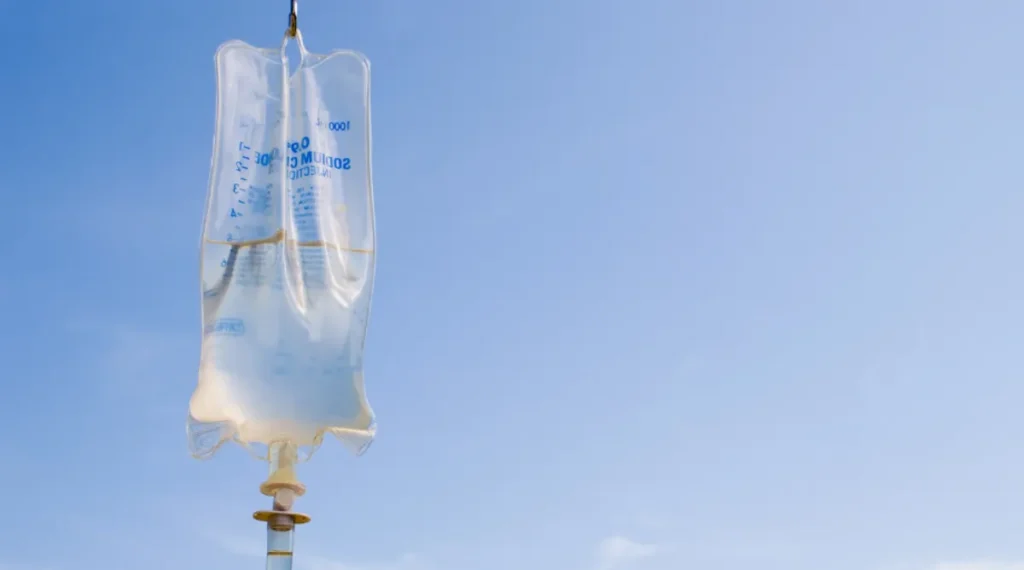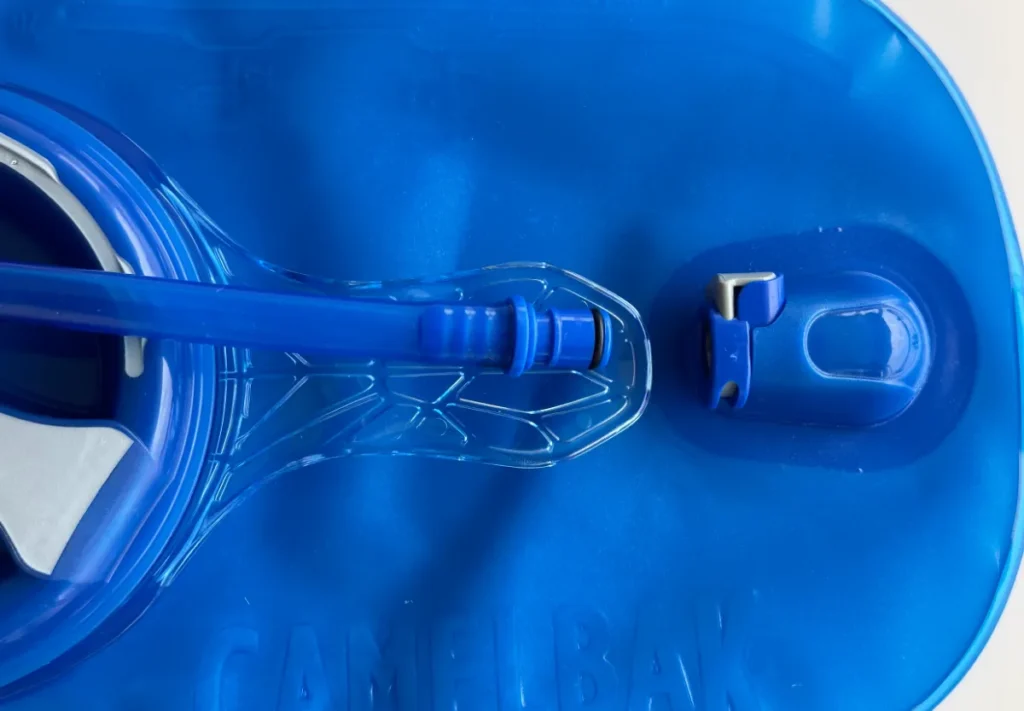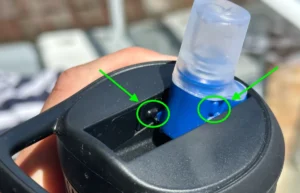Anytime I buy new drinkware, I like to know what my drinking water will be exposed to. Maybe I’m still a little paranoid after all the dangers of BPA became known.
So naturally, when I got my first CamelBak, and especially after it gave a bit of a plasticky taste to my first batch of water, I wanted to know exactly what it was made of.
CamelBak bladders are made of Thermoplastic Polyurethane, or TPU, and have been for decades. It’s an ideal material for hydration pack bladders because it’s incredibly strong, yet lightweight and flexible enough for comfortable use. Plus, it’s free of harmful compounds like BPA, BPS, and BPF and is treated to slow the growth of mold and bacteria in your bladder.
I’ll admit, I was a little skeptical of my CamelBak at first. A flexible plastic pouch for my drinking water was kind of strange and it had a bit of a plasticky smell and taste that would sometimes make my water taste weird.
But once I learned more about what CamelBak reservoirs are made of, I felt much better and have been using one regularly ever since.
I've even been able to remove the weird taste from it after cleaning my CamelBak properly and using some lemon juice to stop it tasting bad.
Modern CamelBak Bladders Are Made Of TPU
Since the early to mid 90s, CamelBak bladders have been made of Thermoplastic Polyurethane, or TPU for short.
If you have a CamelBak bladder chances are almost 100% that it's made from TPU.
It’s the perfect material for a hydration bladder because it’s durable, lightweight, flexible, and safe.
Some other brands of bladders are made from polyethylene. The advantage of this type of plastic is that it tends to be less likely to infuse that plasticky taste into your water. But as far as I am aware no CamelBak bladders are made with polyethylene.
Durability

TPU is durable enough to easily handle the rigors of a bike ride or the trail (or both at once if you’re mountain biking).
I’ve put mine through hell more than a few times, and aside from one small hole that I was able to repair pretty easily, it’s held up amazingly well for five years and counting.
My kids have even used it many times (and we all know how well kids treat gear) and it's even held up to their time with it.
Weight And Flexibility
Because CamelBaks are most often used by performance athletes and weekend warriors, the weight of the pack really matters. I'd love to be drinking out of glass or stainless steel instead of plastic but it would be so heavy and impractical for my hiking or trail runs.
Luckily, TPU is one of the strongest materials by weight that you’ll find and is flexible enough to comfortably conform to your back when worn.
No more water bottle base or lid stabbing me in the back through my backpack.
Sure a stainless steel bladder would withstand more abuse, but who wants to drag that weight around, digging into your back all day?
Safety

TPU is completely free of BPA, BPS, and BPF, meaning it’s one of the safest plastics for food and drink that you’ll find.
Still, it’s best to avoid leaving water in the bladder for too long and using it with hot or boiling water, both of which can increase the number of chemicals that leach from the plastic.
In fact, the biggest safety concern I personally see with CamelBak bladders is the fact that they can easily grow mold if you don't clean them properly. You can treat and remove mold from CamelBak bladders but it's best to avoid mold in the first place.
Make sure to wash your CamelBak bladder after each use (or every couple of uses) and the most important thing is to thoroughly dry it so mold will struggle to grow.
If you know you won't have time (or the energy) to dry your CamelBak properly then a good tip is to put your CamelBak in the freezer for storage. The cold temperatures will slow growth of mold significantly and you can even half fill the bladder so you'll have iced water the next time you hit the trail.
The Original CamelBak Bladders Were Made Of PVC
The original CamelBak bladders from the late 80s and early 90s were made of PVC, this is the same plastic that IV fluid bags are made from. There’s actually a pretty funny story about how that came to be.
Michael Eidson, a paramedic and cyclist, had the idea shortly before a bike race on a brutally hot Texas summer day to make a water bladder that could be used hands-free while riding.

Being an EMT by trade, he had familiarity with and easy access to IV bags. So he filled one with water, stuck it in a sock, pinned it to the back of his shirt, and let an IV line hang over his shoulder, acting as a straw.
It worked so well, he immediately went to work on a version that he could take to market
ThermalBak was born… and shortly thereafter, rebranded to CamelBak.
The original CamelBak bladders were made of the same material as the IV bag of the prototype hydration pack, polyvinyl chloride (or PVC). After all, it worked great in the test run.
But it turned out that PVC wasn’t very durable and was very prone to mold. As a result, it was soon replaced by the TPU all CamelBaks are made of to this day.




